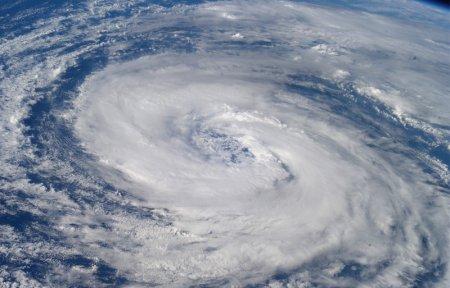4283
Interesting facts about hurricanes

Waves caused by hurricane (tropical cyclone) can throw a ton of fish on the coast. The fact that the eyes of fishes at this point get out of their sockets, due to a sharp drop in pressure.
The energy released during hurricanes, is so great that it was enough to cover the entire Las Vegas for many years.
In the Northern Hemisphere during hurricanes air currents rotate counter-clockwise in the Southern Hemisphere and the opposite is true.
The first description of the tropical storm did Christopher Columbus in 1495.
The word "hurricane" was named after the god of evil, Hurricane, in which believe in some Caribbean islands.
90% of deaths during a hurricane is due to raised them huge waves, rising to a height of 6 meters and with a length of up to 160 kilometers.
In 1900, Hurricane Galveston in Texas has killed more than 8,000 people, which was the largest for the victims of the disaster, due to the sharp change of weather in US history.
Tropical storms kill more people than any other storm weather changes.
Storms on Jupiter can rage for over 300 years in a row, and sizes they often exceed the size of the Earth.
The right part of the dissemination of the hurricane in the northern hemisphere often has more energy. Wind, tornado and storm waves in this part of the tropical cyclone is usually stronger.
Five of the ten most destructive hurricanes in the United States have occurred since 1990.
Over the past 200 years, hurricanes worldwide killed about 1, 9 million people.
The greatest number of lives claimed tropical cyclone Bhola that hit in 1970 for Bangladesh, which killed according to various estimates ranging from 150 thousand to 300 thousand people.
Most of the deaths tropical storms bring in the countries of Southeast Asia and India, due to the flooding of low-lying densely populated areas.
Hurricane Camille had the largest wind speed of the milestones of tropical cyclones on record in the United States.
Hurricane causes avalanches or landslides in its center, rather than at the edges.
Hurricane, brought the greatest destruction in the world, has become a tropical cyclone Katrina, which caused losses of 100 billion dollars.
Scope of tropical storm in height can reach 12 and sometimes 15 kilometers.
Hurricane "Andrew" in 1992 tore off one of the buildings 24metrovuyu steel beam weighing several tons and threw it on the entire block.
The biggest hurricane can be the size of Montana.
Other hurricanes never connected together, but, nevertheless, they may surround each other. This natural phenomenon is called the Fujiwara effect.
Hurricanes never formed directly on the equator, as the need arises for their Coriolis force, which is at the equator is negligible.
While hurricanes (tropical cyclones) can cause terrible destruction, they are very important factors in the functioning of a complex weather system of the Earth. Like giant fans, they take the mass of hot air from the tropical regions and move them toward the poles. Without these cyclones tropical heat would have been unbearable for people and animals.
In 1281 hurricane killed 100,000 Mongols who attacked Mongolia. Thank the gods for the Japanese "kamikaze", which in those days meant a sacred wind sent by the higher powers.
During Hurricane Galveston, what happened in 1900, the nuns of the church orphanage tied yourself to one rope with children, but flood waters were so fast and strong that all of them killed and they drowned.
There are several differences between hurricanes and tornadoes. Firstly, hurricanes last few days and a few minutes tornadoes (rare hours). Second, the more a tornado hurricane diameter of about 2000 times. You can bring this analogy: if a tornado was the size of a hamburger, then the area of the hurricane would be a football stadium.
When tornadoes occur faster moving air. For example, the fastest recorded hurricane wind speed was 320 km / h, while the maximum speed of the tornado was 480 km / h.
Hurricanes often cause tornadoes. For example, Hurricane "Andrew" in 1992 formed 62 tornadoes and Hurricane Beulah (1967) created the 141 tornadoes. Tornadoes can occur a few days after Hurricane contact with the earth's surface.
The name "Hurricane", "typhoon" and "Cyclone" are different names of one natural phenomenon - a tropical cyclone. Tropical cyclones occurring in the Atlantic or eastern Pacific are called hurricanes. In countries that are closer to the western Pacific Ocean, they are called typhoons (from the word Cantonese tai-fun). In the countries bordering the Indian Ocean and the Bay of Bengal, these natural phenomena are called cyclones (from the Greek word meaning "coiled serpent"). In Australia, hurricanes are called "Willy-Jeep».
Hurricane names are from a list proposed by the International Meteorological Organization. There are six different lists and for hurricanes that occur in the Atlantic. Each list is repeated in seven years. Hurricanes brought the greatest destruction of the lists are excluded. Were excluded hurricanes "Andrew", "Camille", "Bob", "Fran", "Katrina".























